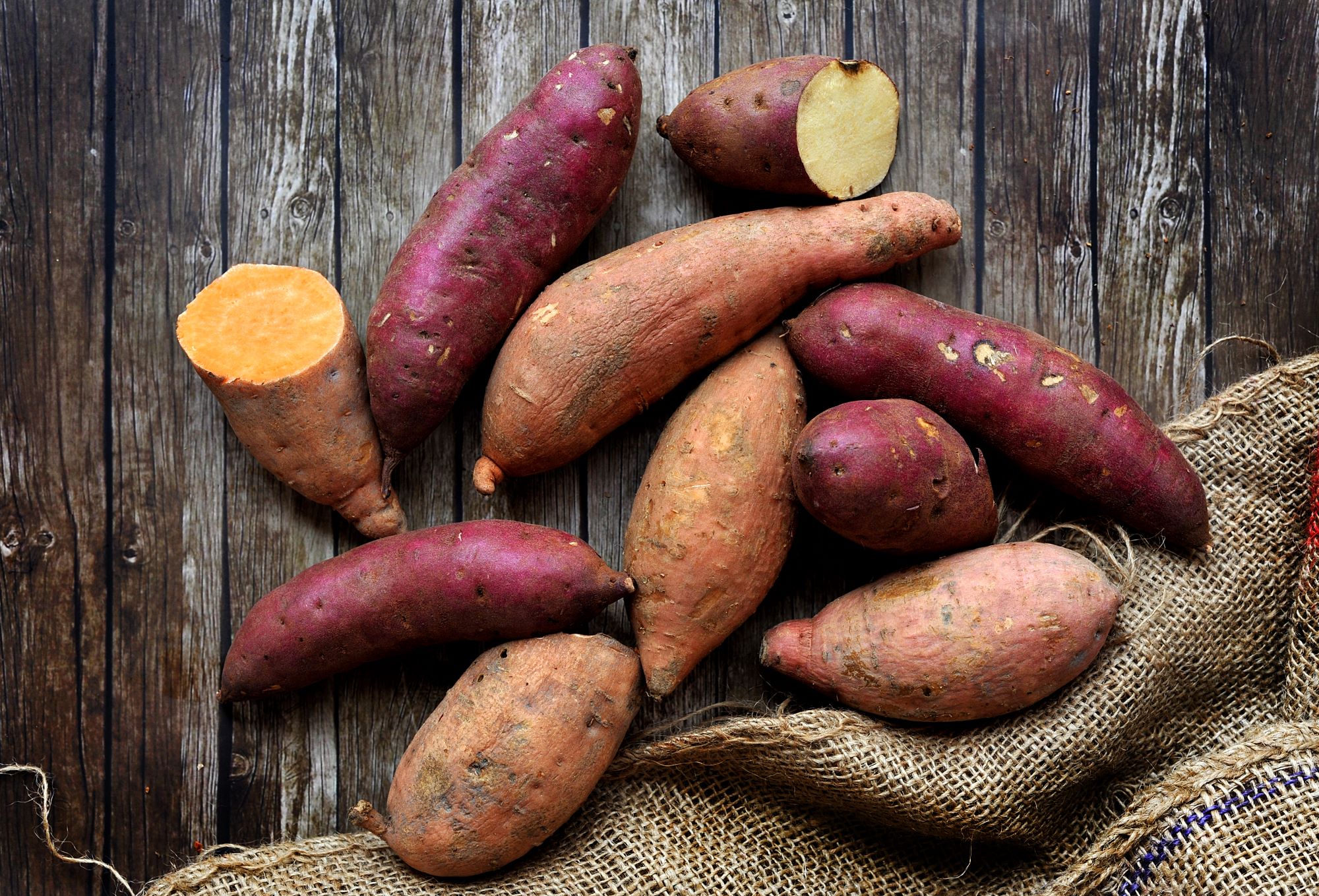
Vietnam is the largest sweetpotato producer in South-eastern Asia. It is also Asia’s 3rd-largest sweetpotato producer (after China and Indonesia) and the world’s 10th largest producer. In Vietnam, sweetpotato is the most widely cultivated food crop after rice and maize. Some 20 percent of the total land under sweetpotato cultivation is planted with CIP-derived varieties.
The International Potato Center (CIP) in collaboration with Hanoi University of Science and Technology (HUST) conducted a study to identify the preferences of urban consumers for fresh and boiled sweetpotato. We used a mixed-methods approach consisting of individual interviews, focus group discussions, and a trained sensory panel.
We found that absence of external defects is the main sought-after characteristic in fresh roots, followed by flavor, texture, weight, size, color, and shape. Both women and men prefer medium- to big-sized roots (with men preferring larger ones) with elongated shape and smooth peel. Women pay more attention to the color of the peel (purple or yellow preferred; white least preferred) and uniformity in root size, while men are more attracted to the firmness of the root. Regarding the boiled product, both women and men indicated mealiness and sweetness among the three most important characteristics. In addition, women prioritized its smell and flavor, while men, its softness. Unlike men, women indicated that the color of the flesh and the size of the root are other important requirements.
The study also determined preferences and associated traits of six popular varieties. Results indicate that while these varieties largely already meet consumers’ preferences, consumers have a clear preference for a few varieties that require marginal adjustments to further increase their acceptability among the growing urban population. These results were used to enhance the current seed product market segmentation (SPMS) to better reflect the dominant varieties in the market and to inform the refinement of the target product profile (TPP) for sweetpotato in South-eastern Asia.
The initial effort to identify market segments for sweetpotato was guided by the eight criteria set for defining SPMSs of crops in the CGIAR portfolio (see Market Intelligence Brief #1). The color of the product is one of these criteria. The initial segmentation included one segment for sweetpotato in South-eastern Asia, and this refers to purple-fleshed potatoes (Table 1). The initial market segmentation effort focused on market segments aligned with existing breeding pipelines; actually, CIP currently has only one active pipeline for the region, focused on purple varieties.
Table 1. The sweetpotato segment for South-eastern Asia, as presented in the initial version of the Seed Product Market Segment Database
| Criteria | |
| Crop | Sweetpotato |
| Hybrid | No |
| Subregion | South-eastern Asia |
| End use | Food-home fresh |
| Color (flesh) | Purple |
| Production environment | Tropical-mega deltas |
| Production system | Irrigated/rainfed |
| Maturity | Mid |
Interestingly, the Vietnam study found that the most common varieties in markets and farmer fields were cream, yellow, and orange-fleshed in color. Purple-fleshed are not commonly consumed in the country. As the Initiative on Market Intelligence is now working to identify segments without an active breeding pipeline, our findings suggest that three more segments should be added to the initial version to capture the additional, and more widespread, flesh colors—namely, yellow, orange, and white.
The study findings also stimulated extensive discussions with CIP and national breeders and experts on what else needs to be adjusted on the initial market segment. Based on these discussions, we made a proposal to revise the current description of two other criteria, namely, production system and maturity. In the Mekong Delta, and South-eastern Asian tropical-mega deltas at large, where most sweetpotato in the subregion is grown, paddy cultivation dominates, and sweetpotato is mostly grown as relay crop under irrigation. Therefore, the ability to produce well under irrigated conditions and a short growing cycle are characteristics that drive varietal adoption and should be prioritized in breeding.
Based on the study results, the current sweetpotato market segmentation for the subregion has been expanded and revised as presented in Table 2. This revised version will be soon made available in the Global Market Intelligence Platform (GloMIP).
Table 2. Proposed new market segments for sweetpotato in South-eastern Asia
| Proposed new segment 1 | Proposed new segment 2 | Proposed new segment 3 | Proposed new segment 4 | |
| Crop | Sweetpotato | Sweetpotato | Sweetpotato | Sweetpotato |
| Hybrid | No | No | No | No |
| Subregion | South-eastern Asia | South-eastern Asia | South-eastern Asia | South-eastern Asia |
| End use | Food-home fresh | Food-home fresh | Food-home fresh | Food-home fresh |
| Color (flesh) | Purple | Yellow | Orange (biofortified) | White |
| Production environment | Tropical-mega deltas | Tropical-mega deltas | Tropical-mega deltas | Tropical-mega deltas |
| Production system | Irrigated* | Irrigated | Irrigated | Irrigated |
| Maturity | Early** | Early | Early | Early |
The Vietnam study provides two additional useful insights on how the existing TPPs can be adjusted, and how the TPPs of the newly proposed market segments can be developed to make breeding more responsive to end-user preferences. First, the minimum score for sweetness in the TTP should be increased and consideration given to elevating this trait from nice-to-have to essential. Second, TPPs might have to be expanded to capture traits related to storability and sap production. Short shelf life and excessive sap are characteristics disliked by most consumers. The CIP breeding team and partners plan to address and respond to these requirements. This is because meeting them can significantly contribute to higher and faster variety uptake and adoption and ultimately increase food security, nutrition, and livelihood opportunities in the region.
More details can be found in article on varietal and trait preferences for boiled sweetpotato in urban Hanoi and implications for breeding published on Food science and Nutrition journal, Volume 12, Issue 1, January 2024.